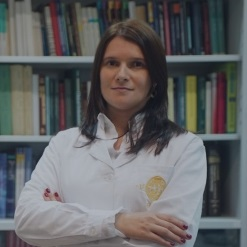Biomaterials Development and Evaluation for Dentistry
A special issue of Materials (ISSN 1996-1944). This special issue belongs to the section "Biomaterials".
Deadline for manuscript submissions: closed (10 August 2023) | Viewed by 17302
Special Issue Editors
Interests: adhesives; cytotoxicity and biocompatibility; dentistry biomaterials; composites
Special Issues, Collections and Topics in MDPI journals
Interests: dentistry; dental biomaterials; photodynamic therapy; cancer; in vitro and animal models
Special Issues, Collections and Topics in MDPI journals
Special Issue Information
Dear Colleagues,
Biomaterials play a fundamental role in dental practice today, being used on a daily basis. They are used to replace lost tissues and restore oral function across all dental specialties. While in the past, we aimed for biotolerant and bioinert materials, state-of-the-art compounds with bioactive properties, in addition to replacing the lost tissues, also stimulate reparative and regenerative processes. These improved biomaterials expand the therapeutic options and clinical success in an unprecedented manner.
Biomaterials can present different compositions, from standard metal and ceramic materials to more updated polymeric and nanoparticles. The different constituents elicit various biological responses, depending on several factors, such as the locale of application, bioavailability, and biodistribution, contact time, interaction with tissues, and other materials.
Regardless of their constituents, during biomaterials development and testing, evaluating their physical and biological properties is fundamental, along with their functional assessment. Physically, a material should withstand the mechanical, thermal, and chemical stresses of the oral environment while maintaining high longevity. Regarding biocompatibility, the absence of toxicity, immunogenicity, and mutagenicity are of particular importance. Finally, the material must successfully perform its function, supporting the clinical application.
This Special Issue of Materials aims to provide the readership with the current research on dental biomaterials, particularly the development of bioactive materials, their physical and biocompatibility assessment, and clinical applicability. Original research using different cellular and animal models, as well as translational and clinical work describing the use of biomaterials, is welcome. Review manuscripts focusing on dental biomaterials will also be included.
Prof. Eunice Carrilho
Dr. Mafalda Laranjo
Guest Editors
Manuscript Submission Information
Manuscripts should be submitted online at www.mdpi.com by registering and logging in to this website. Once you are registered, click here to go to the submission form. Manuscripts can be submitted until the deadline. All submissions that pass pre-check are peer-reviewed. Accepted papers will be published continuously in the journal (as soon as accepted) and will be listed together on the special issue website. Research articles, review articles as well as short communications are invited. For planned papers, a title and short abstract (about 100 words) can be sent to the Editorial Office for announcement on this website.
Submitted manuscripts should not have been published previously, nor be under consideration for publication elsewhere (except conference proceedings papers). All manuscripts are thoroughly refereed through a single-blind peer-review process. A guide for authors and other relevant information for submission of manuscripts is available on the Instructions for Authors page. Materials is an international peer-reviewed open access semimonthly journal published by MDPI.
Please visit the Instructions for Authors page before submitting a manuscript. The Article Processing Charge (APC) for publication in this open access journal is 2600 CHF (Swiss Francs). Submitted papers should be well formatted and use good English. Authors may use MDPI's English editing service prior to publication or during author revisions.
Keywords
- Biomaterials
- Dentistry
- Biocompatibility
- Bioactivity
- Physical properties
- Clinical and preclinical trials
- Nanotechnology







